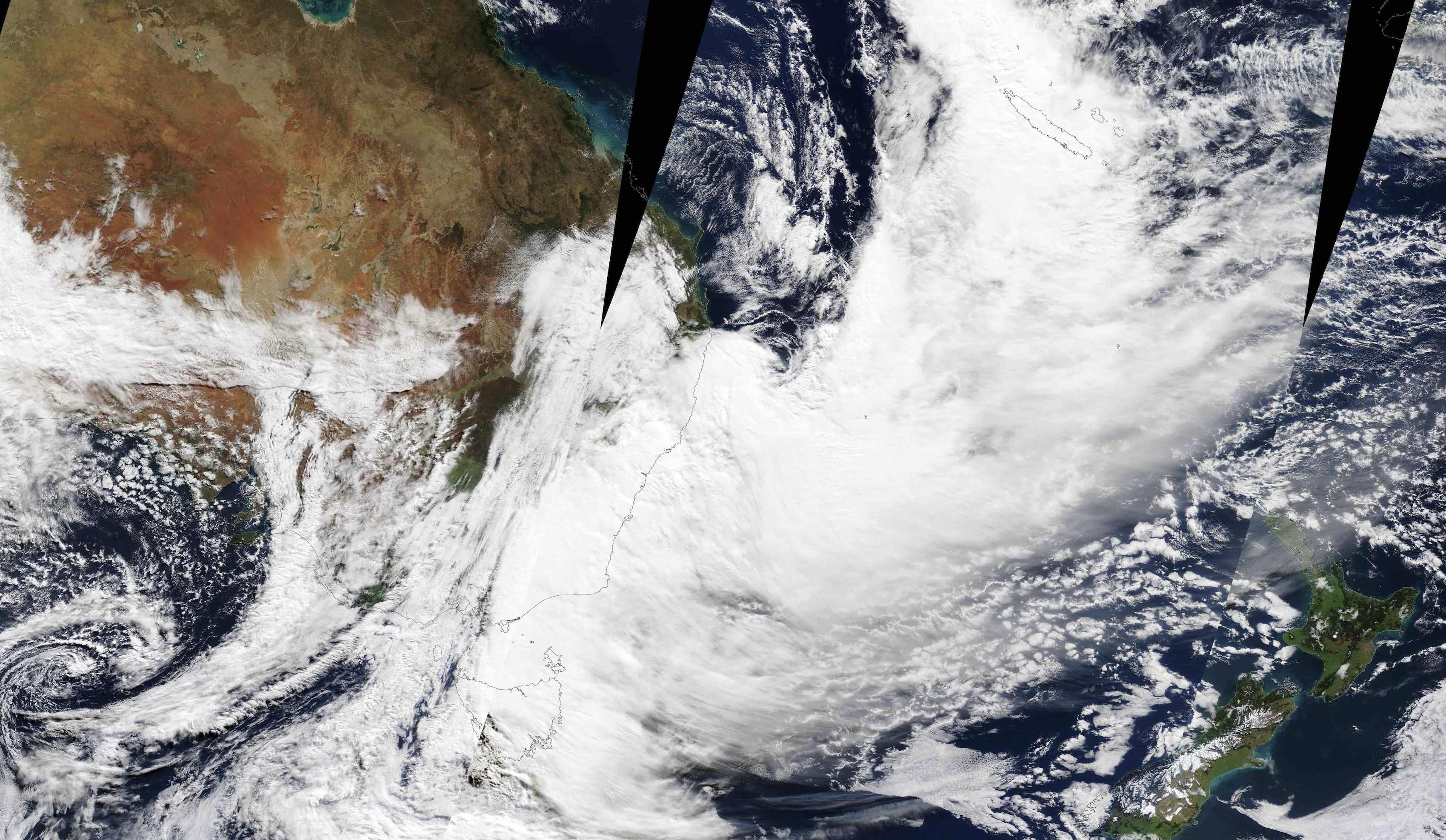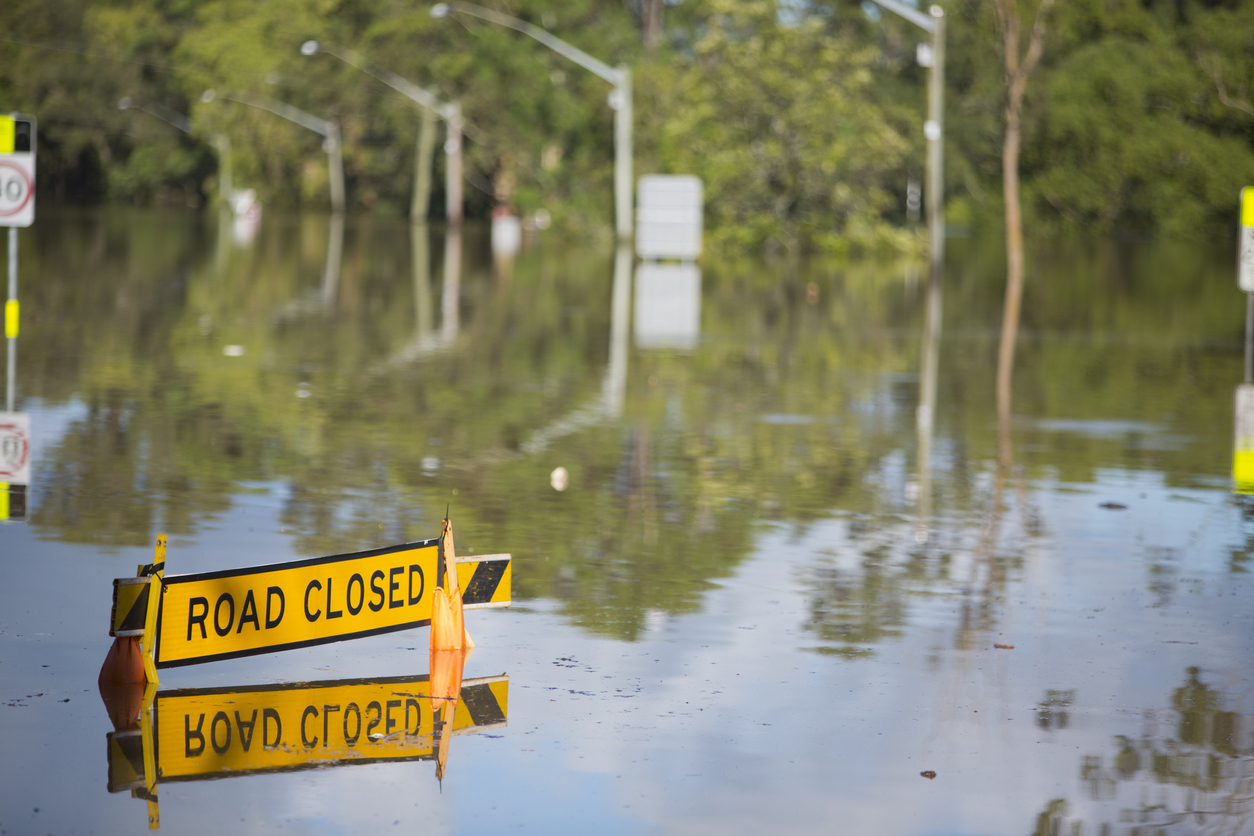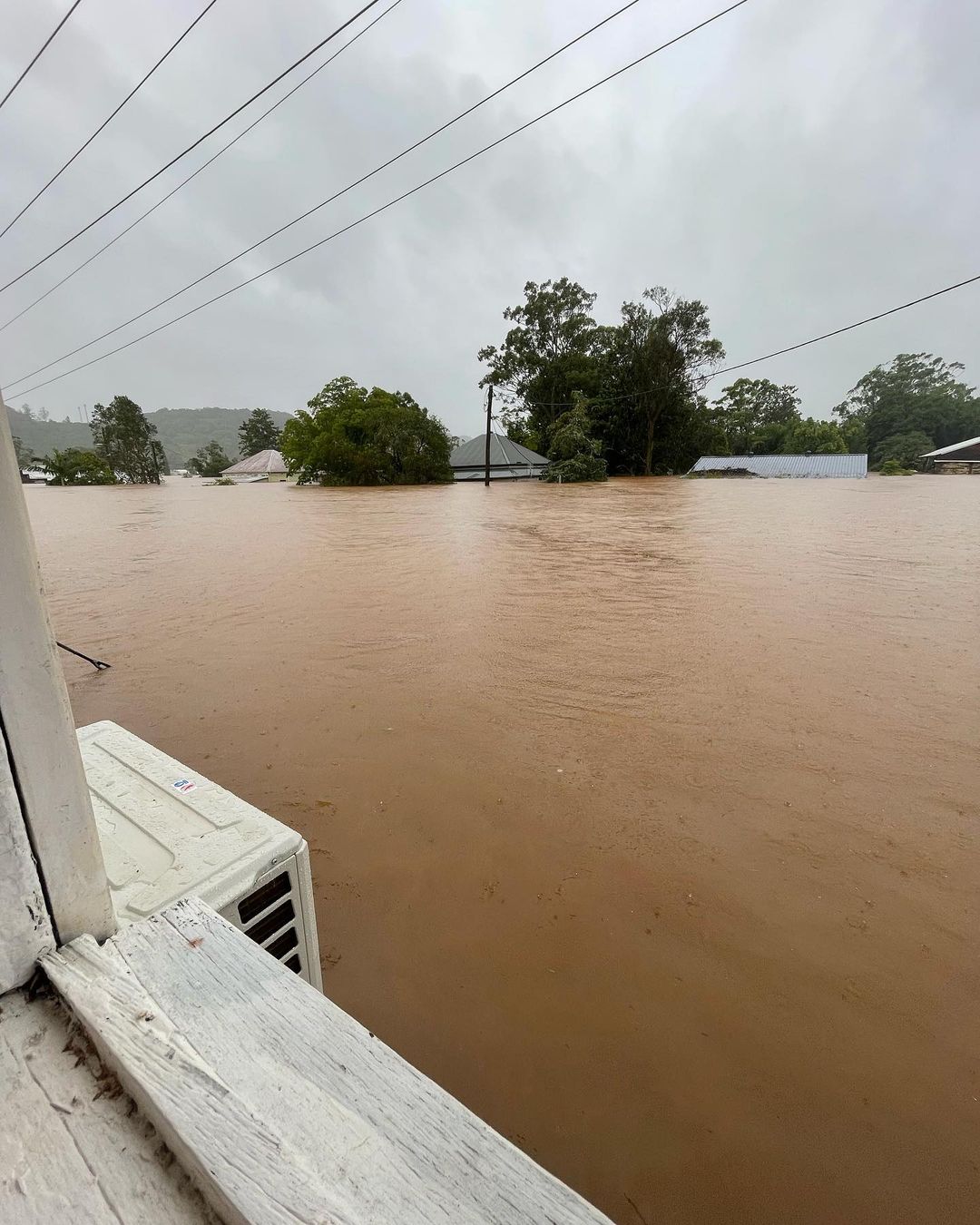Flash Floods in Australia: What You Need to Know
In the vast landscape of Australia's weather, one term that demands attention and preparedness is "flash flood." As a country renowned for its diverse climate, understanding what a flash flood is and how it impacts different regions is crucial. In this guide, we'll delve into the nuances of flash floods in Australia, exploring causes, characteristics and safety measures, ensuring you are well-equipped to navigate this natural phenomenon.
Unravelling the term "Flash Flood"
A flash flood is a sudden and intense flood that occurs within a short time frame usually within six hours of heavy rainfall or other events, such as dam breaks or rapid snowmelt. Unlike slow-rising river floods, flash floods are characterised by their rapid onset and swift escalation, catching people off guard. Australia, with its diverse climate and topography, is susceptible to flash floods, which can happen in urban areas, rural regions and even in arid zones. The unpredictability of these events underscores the importance of being well-informed and prepared.
Causes of Flash Floods in Australia
Meteorological Factors
Meteorological factors such as intense rainfall play a pivotal role in the occurrence of flash floods in Australia.
Intense Rainfall
- Australia witnesses a variety of rainfall patterns due to its vast geographical expanse. Intense rainfall, often associated with severe weather events like tropical cyclones or convective storms, is a primary meteorological factor leading to flash floods.
- The uneven distribution of rainfall across different regions of Australia contributes to localised heavy downpours, elevating the risk of flash flooding.
Tropical Cyclones
- Northern Australia is prone to tropical cyclones, which bring heavy rainfall and strong winds. The combination of intense rainfall and storm surge during cyclones can lead to flash floods in coastal and inland areas.
- Tropical lows can be just as dangerous as tropical cyclones when it comes to flash flooding. Both types of systems can carry enormous amounts of moisture over the land, and allow heavy rainfall in a short space of time.
- The frequency and intensity of tropical cyclones and tropical lows in the region contribute significantly to the meteorological factors influencing flash floods.
East Coast Lows and Coastal Troughs
- Eastern Australia in particular is susceptible to flash flooding through the formation of east coast lows and coastal troughs.
- These systems take moisture from the warm East Australian Current (EAC) and combine it with cold air from Antartica. This allows heavy rainfall to impact the parts of the coast and adjacent inland, and can lead to major flooding in short spaces of time.
- These systems can happen any time of year, but are more common when waters are at their warmest (like in February and March) or when the atmosphere can cool down quickly (like in June and July).

Image: Thick cloud over eastern NSW being caused by an east coast low and associated low pressure trough. This system produced significant beach erosion and flash flooding along parts of the NSW coast. Source: NASA
Convective Storms
- Convective storms, characterised by rapid vertical development of clouds and intense precipitation, are common meteorological phenomena in Australia.
- These storms can produce localised heavy rainfall over short periods, contributing to flash flood events, particularly in regions prone to convective activity.
Orographic Lifting
- Australia's varied topography includes mountainous regions where orographic lifting can enhance rainfall on windward slopes.
- As moist air is forced to ascend over elevated terrain, it cools and condenses, leading to enhanced precipitation. This orographic effect can contribute to intense rainfall and increase the risk of flash floods in certain areas.
Geological Factors
Some geological aspects, including soil composition, land cover and specific characteristics of the landscape, also contribute to the susceptibility of certain areas to flash flood events.
Soil Composition
- The type and composition of soil in a given region significantly impacts its ability to absorb water. In Australia, variations in soil types exist across different regions, ranging from sandy soils to clayey soils.
- Soils with poor infiltration capabilities, such as clay soils, can lead to increased surface runoff during heavy rainfall, escalating the risk of flash floods.
Land Cover
- The nature of land cover, including vegetation, impervious surfaces and land use, plays a critical role in flash flood dynamics.
- Urbanised areas with extensive impervious surfaces, like concrete and asphalt, reduce the natural absorption of rainfall, causing rapid runoff and elevating the risk of flash flooding.
Watershed Characteristics
- Watershed characteristics, such as the size and shape of drainage basins, influence how water flows through the landscape.
- Small, steep watersheds can amplify the rapid runoff of water into rivers and streams, contributing to the swift onset of flash floods.
Landforms and Topography
- Australia's diverse topography, which includes mountains, plateaus and plains, plays a role in flash flood occurrence.
- Areas with steep slopes may experience accelerated runoff during intense rainfall, leading to the rapid development of flash floods.
Vegetation Cover
- The presence of vegetation can have a mitigating effect on flash floods. Vegetation helps stabilise soil, reduce runoff and enhance water absorption.
- Deforestation or removal of natural vegetation can increase the vulnerability of an area to flash floods by reducing the protective effects of vegetation.
Urbanisation and Human Activities
- Human activities and urbanisation can exacerbate the meteorological factors contributing to flash floods.
- Urban areas with extensive impervious surfaces, such as concrete and asphalt, reduce natural infiltration, leading to increased surface runoff during intense rainfall, elevating the risk of flash floods.

Source: iStock
Characteristics of Australian Flash Floods
Flash floods in Australia exhibit distinct characteristics that set them apart from other weather-related events. These features contribute to the unique challenges posed by flash floods in various regions across the country. Understanding these characteristics is essential for effective preparedness, response and mitigation efforts.
Rapid Onset and Intensity
One defining feature of Australian flash floods is their rapid onset and intensity. In a matter of minutes, seemingly calm water bodies can transform into raging torrents, catching individuals, communities and emergency services off guard.
Intense rainfall, often associated with tropical cyclones, convective storms, or other severe weather events, can also lead to an abrupt and significant increase in water flow, triggering flash floods.
Short Duration, High Impact
Flash floods are characterised by their short duration but high impact. While the intense rainfall causing the flood may last only a short period, the consequences can be severe and long-lasting. The brief yet intense nature of flash floods makes them particularly challenging to predict and respond to effectively.
Localised Events
Flash floods in Australia often occur in localised areas rather than affecting entire regions. This localised nature is influenced by factors such as topography, soil composition and land cover. Small, steep watersheds and urbanised areas with poor drainage may experience flash floods more frequently than other regions.
Seasonal Variability
Flash floods in Australia can exhibit seasonal variability, with certain times of the year being more prone to these events. For instance, the tropical cyclone season in northern Australia often brings heightened flash flood risks during the wet season. Understanding the seasonal patterns helps in implementing targeted preparedness measures during periods of increased vulnerability.
Impact on Urban Areas
Urban areas in Australia are particularly vulnerable to flash floods due to the prevalence of impervious surfaces and altered drainage systems. Heavy rainfall in cities can lead to rapid runoff, overwhelming stormwater infrastructure and causing flash floods.
The impact on urban areas emphasises the need for tailored emergency response plans and infrastructure improvements to mitigate the risks associated with flash floods.
Erosion and Sediment Transport
Flash floods often result in soil erosion and the transport of sediment, posing additional challenges to ecosystems and water quality. Erosion caused by flash floods can impact water bodies, affecting aquatic habitats and contributing to increased sedimentation in rivers and streams.
Flash Flood Warning Systems in Australia
The Bureau of Meteorology (BOM) in Australia provides flood forecasting and warning services as part of the Total Flood Warning System, collaborating with various emergency management agencies, government departments, water authorities and local councils. This system integrates information flow between various entities for effective decision-making in flood situations.
The process involves weather observations, dam information, modelling scenarios and communication with local councils and state emergency services (SES). The Bureau issues Flood Watches and Warnings, with Watches indicating potential flooding and Warnings specifying imminent flooding at particular locations. Flood classifications are used by emergency services to categorise flooding into minor, moderate, or major, based on the impact levels at key river height stations.
The Bureau also provides information on river heights, including observed and predicted levels, aiding in effective community and emergency service response.
Impact of Australian Flash Floods
Australian flash floods have had significant impacts in recent years, with notable instances causing widespread damage and disruption. In October 2022, the southeast region, including Melbourne, experienced severe flash flooding. Rivers in Victoria, such as the Maribyrnong and the Goulburn, reached major flood levels, prompting evacuations in Melbourne's suburbs and other areas. The Goulburn River at Seymour even surpassed its previous record height from 1974. This event led to over 200 flood rescues, highlighting the acute emergency response challenges posed by such natural disasters??.
The 2022 eastern Australia floods were among the most severe, with areas like the Wide Bay–Burnett and Western Downs experiencing devastating effects. Cities like Gympie and Maryborough faced significant flooding, with Gympie suffering its worst flooding since 1893. Dalby saw flood levels peak at 3.6 metres, impacting homes and businesses and prompting residents to consider resettling. The Northern Rivers region faced highway closures, shortages of essentials like fuel, food, water and significant property damage. Lismore, in particular, experienced its worst flood in recorded history.

Image: Flooding in Lismore on March 1, 2022. Source: @sarah_anne12 / Instagram
Moreover, in March 2021, New South Wales experienced some of the worst flooding in decades due to record rains. The heavy rainfall led to dangerous flash flooding, necessitating the evacuation of multiple regions. The flooding unmoored houses, engulfed roads, stranded towns, and cut power lines. Sydney was particularly affected, with a major dam overflowing, resulting in major flooding of the Hawkesbury River. The state of New South Wales, home to about a third of Australia's population, witnessed broken March rainfall records, with the downpour expected to continue for several days??.
These events underscore the severity of flash floods in Australia, highlighting the need for effective emergency response and preparedness strategies to mitigate the impact on communities.
Staying Safe During Australian Flash Floods
To stay safe during floods in Australia, residents are advised to follow several key guidelines as outlined by their State Emergency Service. Each SES may provide different advice due to variations in local and climatic factors. See below for each state/territory’s SES flood warnings page:
New South Wales (NSW): NSW State Emergency Service - Flood
Victoria (VIC): Victoria State Emergency Service - Flood
Queensland (QLD): Queensland Fire & Emergency Services - Floodwater
South Australia (SA): South Australia State Emergency Service - Flood
Western Australia (WA): SES Volunteers Association - Floods
Tasmania (TAS): Tasmania State Emergency Service - Flood
Northern Territory (NT): NT Police, Fire & Emergency Services - Floods
Australian Capital Territory (ACT): ACT Emergency Services Agency - Floods